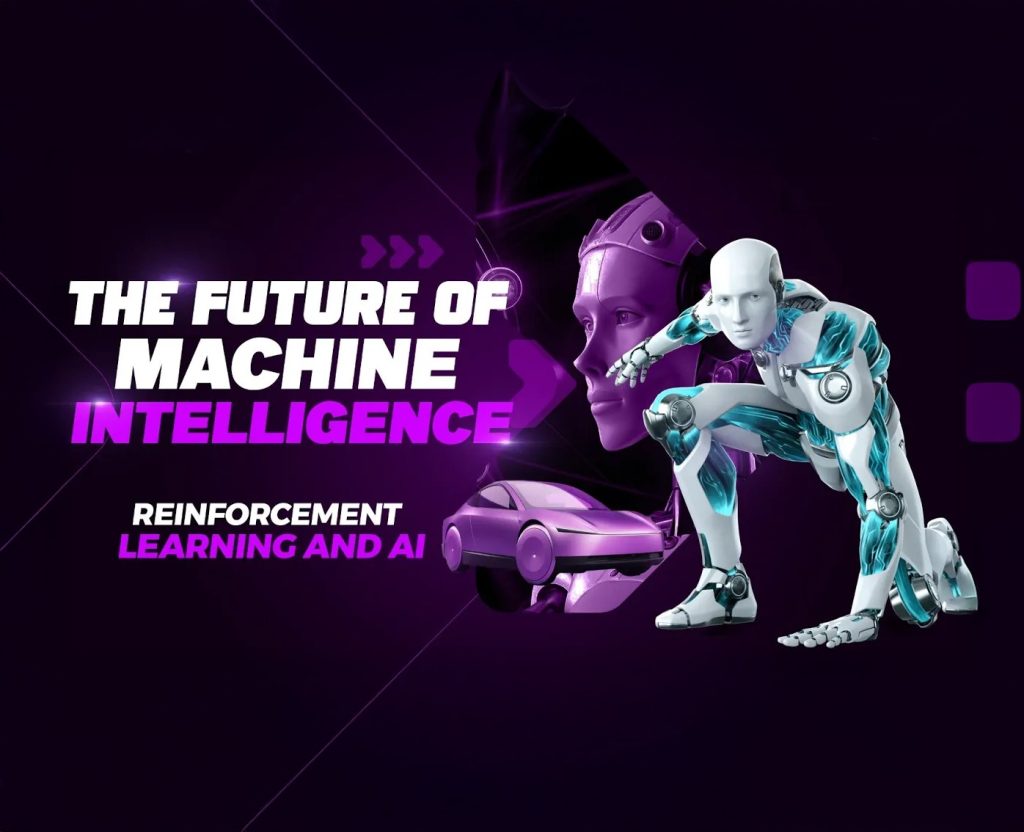Understanding Reinforcement Learning and AI: The Future of Machine Intelligence
Imagine a futuristic city where drones zip through the sky, autonomous vehicles navigate traffic seamlessly, and robots interact intelligently with humans. This is not science fiction—this is the promise of Reinforcement Learning (RL), a powerful frontier in artificial intelligence (AI).
What Is Reinforcement Learning?
Reinforcement Learning is a subfield of AI focused on how agents learn to make decisions by interacting with an environment. Rather than being told exactly what to do, an RL agent learns through trial and error, receiving feedback in the form of rewards or penalties. Over time, the agent refines its behavior to maximize the accumulated reward.
Think of it like training a dog: the agent (the dog) tries different actions, and based on the consequences (treats or reprimands), it learns the optimal way to act.
Key Concepts of Reinforcement Learning
To understand RL, it’s essential to grasp its foundational components:
- Agent: The learner or decision-maker. It could be a robot, software bot, or even a virtual player in a game.
- Environment: The external system in which the agent operates.
- Actions: Choices the agent can make at any given point.
- Rewards: Numerical feedback received after actions, which guides learning.
- State: A representation of the current situation the agent is in.
Together, these elements create a loop where the agent interacts with the environment, learns from outcomes, and improves performance over time.
How Does It Work?
The RL process follows a cycle:
- The agent observes its state.
- It selects an action.
- The environment responds with a new state and a reward.
- The agent uses this feedback to update its strategy.
- The cycle repeats, improving the agent’s behavior iteratively.
This ongoing feedback loop allows machines to learn complex tasks without being explicitly programmed for every scenario.
Exploration vs. Exploitation
One of the core dilemmas in RL is the balance between:
- Exploration: Trying new actions to discover potentially better rewards.
- Exploitation: Choosing known actions that yield high rewards based on past experience.
Effective RL algorithms find a way to balance these two strategies to optimize long-term success.
Real-World Applications of Reinforcement Learning
RL is already transforming industries:
- Gaming: AI agents like AlphaGo have defeated world champions by learning game strategies from scratch.
- Robotics: Robots trained via RL can learn to assemble products or navigate unpredictable terrains.
- Autonomous Vehicles: Self-driving cars use RL to make real-time decisions in complex driving environments.
Key RL Algorithms
RL techniques fall into two main categories: value-based and policy-based algorithms.
Value-Based Algorithms
These algorithms estimate the value of each state or state-action pair to guide the agent’s decisions.
- Q-Learning: A model-free algorithm that learns the optimal action-selection policy using Q-tables, which store expected rewards for state-action pairs (Watkins & Dayan).
- Deep Q-Networks (DQN): Extend Q-learning using deep neural networks to handle complex environments with high-dimensional input (Mnih et al.).
- SARSA: An on-policy algorithm that updates the value based on the action chosen by the current policy, incorporating more conservative updates.

Policy-Based Algorithms
These directly optimize the policy that maps states to actions without estimating value functions.
- Algorithms include REINFORCE, Proximal Policy Optimization (PPO), Trust Region Policy Optimization (TRPO), and Actor-Critic methods such as Advantage Actor-Critic (A2C) and Deep Deterministic Policy Gradient (DDPG).
The Future of Reinforcement Learning
Reinforcement Learning is paving the way for the next generation of intelligent systems:
- Space Exploration: Robots using RL could autonomously explore unknown planetary terrains.
- Personalized Healthcare: Adaptive treatment plans that evolve based on patient response.
- Smart Energy Management: AI systems that dynamically optimize energy usage in smart grids.
The rapid evolution of RL suggests a future where machines can continually learn, adapt, and solve complex challenges in ways previously unimaginable.
Share your thoughts in the comments below! Don’t forget to visit our website for more insights on tech trends, AI innovations, and the future of retail.
For further assistance, visit our channel and refer the video
Reinforcement Learning : The Future of AI and Machine Intelligence | Applications & Algorithms

References
- Mnih, Volodymyr, et al. “Human-Level Control through Deep Sutton, Richard S., and Andrew G. Barto. Reinforcement Learning: An Introduction. 2nd ed., MIT Press, 2018.
- Watkins, Christopher J. C. H., and Peter Dayan. “Q-Learning.” Machine Learning, vol. 8, no. 3-4, 1992, pp. 279–292. https://doi.org/10.1007/BF00992698.
- Schulman, John, et al. “Proximal Policy Optimization Algorithms.” arXiv preprint arXiv:1707.06347, 2017.
- Reinforcement Learning.” Nature, vol. 518, no. 7540, 2015, pp. 529–533. https://doi.org/10.1038/nature14236.
Share This :

